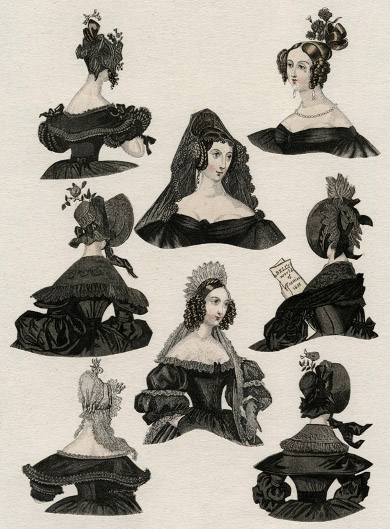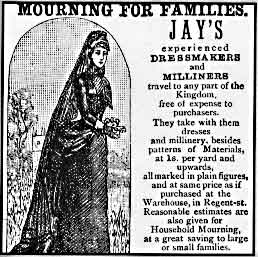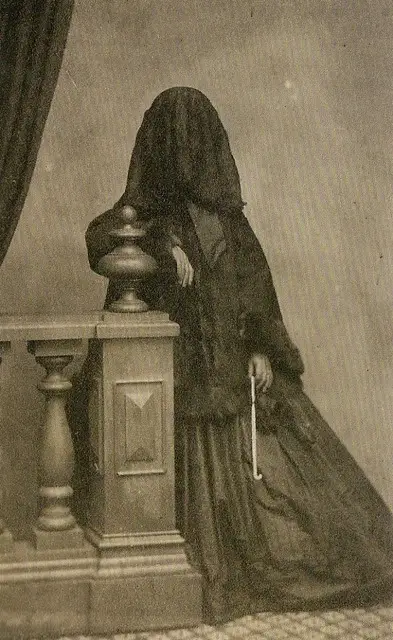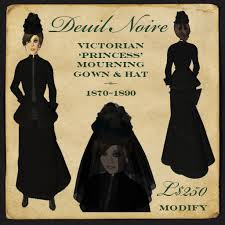Also see: Victorian Era Burial
The mourning period began with the death of Queen Victoria’s husband, Prince Albert in 1861 and she remained in mourning her entire life. This change of behaviour showed by her reflected her ethics as well as her personal taste in mourning.

After seeing Victoria’s example, it became habitual for families to have intricate rituals and remember the dead. The mourning ritual included wearing mourning clothes, an expensive funeral, isolation from society for some time and constructing monument on the grave of the deceased.
Victorian era mourning clothes
The mourning dresses were made from Henrietta and Melrose trimmed with crepe and Handkerchiefs were made from cambric. The use of jewellery achieved new heights in this period. Black amber was popularized by Victoria. In the later half of the 19th century, gold, gutta-percha were used as costume jewellery. Hair styling gained popularity here along with rings, bracelets etc.

The Victorian mourning clothes were primarily for women and widows in particular. This fashion isolated the widow from the society in her time of need. The length of the clothes suggested the relation the person had with the deceased.
How long was the mourning period in Victorian times?
During the 19th century, a widow was to mourn the death of her husband for over two years. The mourning can be classified into three stages, namely, Full mourning, Second mourning and half mourning.
In Full mourning, a woman wore black dull clothes for one year and a day without which she could not leave the house and was prohibited from wearing ornaments. An essential part of her clothing was a weeping veil of black crape.


A widow had to give up her social life and do church services. In case she had no source of income or had to support her small children, she was allowed to marry and she had to return her mourning dress a day after her marriage.
Second mourning was of nine months and the veil was lifted and worn back over the head. The widow could wear minor jewellery. Half mourning lasted for three months and the widow was allowed to wear some color fabrics like grey, purple. Men wore usual dark suits with black gloves and children generally wore white as mourning dress.
The mourning period came to an end with the death of Victoria in 1901 and with it, in part, the world came out of this mourning era. Women no longer remained tied up in the rigid system of mourning seen in the Victorian age.